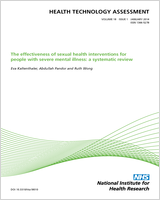NCBI Bookshelf. A service of the National Library of Medicine, National Institutes of Health.
Duarte A, Mebrahtu T, Goncalves PS, et al. Adalimumab, etanercept and ustekinumab for treating plaque psoriasis in children and young people: systematic review and economic evaluation. Southampton (UK): NIHR Journals Library; 2017 Nov. (Health Technology Assessment, No. 21.64.)

Adalimumab, etanercept and ustekinumab for treating plaque psoriasis in children and young people: systematic review and economic evaluation.
Show details| Item | Period | |||
|---|---|---|---|---|
| Placebo crossover and active treatment (12–52 weeks) | Follow-up (52–60 weeks) | |||
| Judgement | Justification | Judgement | Justification | |
| Is the population based on a representative sample selected from a relevant population? | Yes | All participants from the initial blinded period were eligible to enter the crossover phase of the study | Yes | All participants from previous phases were eligible for follow-up |
| Are the criteria for inclusion explicit? | Yes | All participants from the initial blinded period were eligible to enter the crossover phase of the study | Yes | All participants from previous phases were eligible for follow-up |
| Were groups similar at baseline in terms of important confounding variables? If not, was the analysis adjusted to account for the imbalance? | NA | This phase of the study did not aim for comparative analysis | NA | This phase of the study did not aim for comparative analysis |
| Was knowledge of the allocated intervention by outcome assessors adequately prevented during the study? | Yes | The sponsor, investigative study sites and participants remained blinded to treatment assignment until the last participant enrolled had completed the study | Yes | The sponsor, investigative study sites and participants remained blinded to treatment assignment until the last participant enrolled had completed the week 60 evaluations and the database was locked |
| Were losses to follow-up < 20%? | Yes | Only 7 out of 110 participants withdrew by the end of this phase | Unclear | The total loss to follow-up or withdrawals at this phase of the study were not reported |
| Were all patients accounted for at the end of study follow-up? | Yes | Withdrawals and reasons (e.g. AEs, death and lack of efficacy) were reported | Unclear | The total loss to follow-up for this phase of the study was not reported |
| Were reliable methods used to measure outcomes? | Yes | PASI scores were reported | NA | The follow-up was aimed only at safety reports |
| Was the study sufficiently powered to detect a treatment effect? | NA | The follow-up period did not aim for comparative analyses | NA | The follow-up period did not aim for comparative analyses |
| Was the study follow-up duration sufficient to detect a long-term treatment effect? | Yes | Participants were followed up for 40 weeks | No | Participants were followed up for only 8 weeks |
NA, not applicable.
- Ustekinumab risk-of-bias assessment for trial extension periods - Adalimumab, et...Ustekinumab risk-of-bias assessment for trial extension periods - Adalimumab, etanercept and ustekinumab for treating plaque psoriasis in children and young people: systematic review and economic evaluation
Your browsing activity is empty.
Activity recording is turned off.
See more...